I went to Snake Gulch to see Native American rock art, not snakes. I’d heard this is where to find some of the best preserved prehistoric rock art along the Kaibab Plateau. And although I only hiked in about 2 1/2 miles out of the 22 mile possibility I saw some very impressive pictographs and petroglyphs.
Always a beautiful drive through the Kaibab National Forest and FR642 ended on the edge of Kanab Creek Wilderness. At one time prior to the canyons wilderness designation in 1984 there was a road that accessed Snake Gulch, but now only hikers and equestrians frequent this spiritual experience. Hiking was very easy with the lack of any significant elevation gain or loss.
Just before entering the wilderness area I saw this ruin that surely wasn’t native made but instead was evidence of ranchers once using the gulch to run cattle.
I walked the narrow trail keeping my eyes peeled for snakes, scanning back and forth, ears attentive for a insistent rattle. At first the regularity of grasshoppers jumping from just ahead gave me a start. Not a lot of other sounds, an occasional bird, but mostly just the whispery wind. And good thing for a breeze as the sun beat down with no shade in sight.
I would stop to scan the irregular canyon walls with their horizontal layers deposited 270 million years ago by an ancient sea. The power of water carved this canyon later on and left rich soil where the native people planted crops.
They found shelter in shallow caves, a place to call home and raise a family.
Several of the Snake Gulch rock art panels are listed on the National Register of Historic Places because of the artistic and distinctive painted and pecked designs that date back as far as 500 BC. Paint was made from plants or minerals ground into powder and mixed with animal fat or plant oil.
They have survived in this timeless environment. Some are fading from weathering while others have broken off the rock face. Unfortunately some vandalism has also occurred and could be unintentional by touching and leaving oils behind which causes the paint to deteriorate. Respect must be observed in this ancient place. Whether we understand the meanings behind the art doesn’t really matter because the images reflect changes over time for people of the past.
I continued beyond the shelter a short distance, but it called me back. I wanted to sit on the well polished rocks that had fallen long before the native people used this place. Black smoke stains from their fires long ago still clung to the rock. I felt at peace.
And other than the spirits, only a lizard joined me for company.
How to get there
From Jacobs Lake Hwy 67, drive west on FR461 for 5 miles then continue west on FR462 for 3 miles to FH22. Turn left and go 1.5 miles to FR423. Turn right and go 1.25 miles to FR642. Follow FR642 for 2 miles to the end at the trailhead. The gravel road is passable in a sedan, but the last 3 miles could be a bit difficult when wet.
Snake Gulch trail #59 is 44 miles round trip. Camp nearby and get an early start. Best to hike in spring or fall as there is absolutely no shade and will get quite hot during summer.
Please visit with respect.

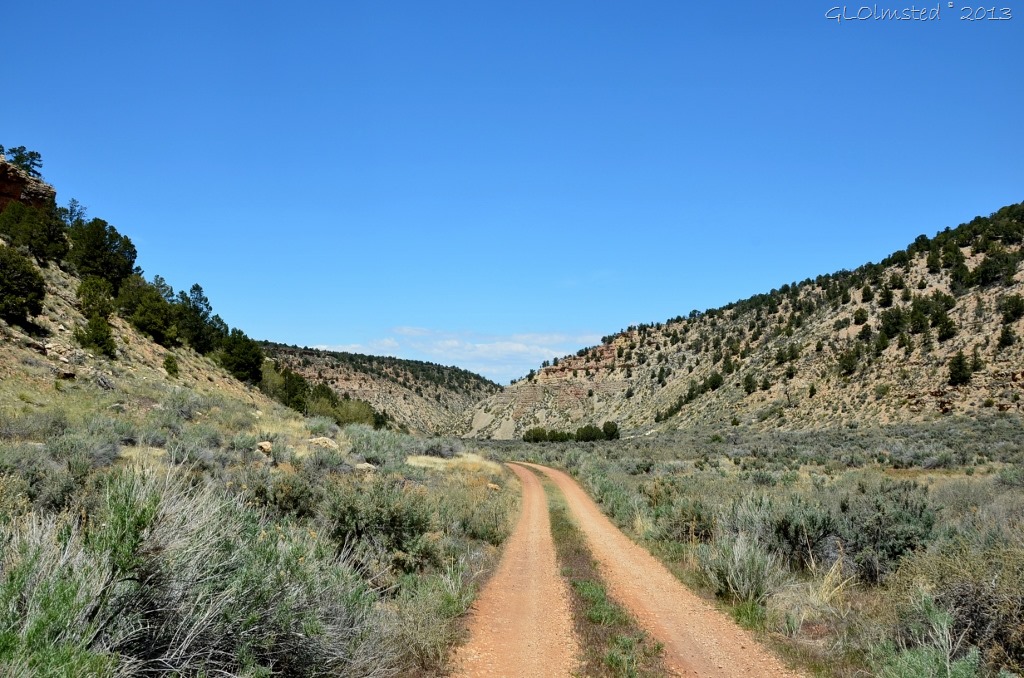
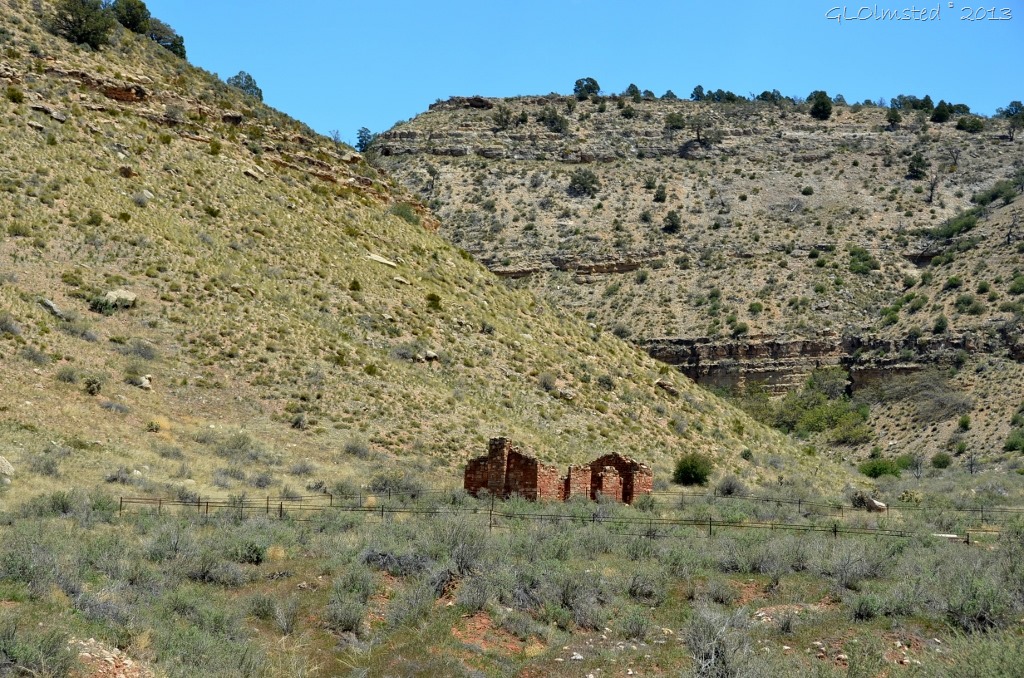
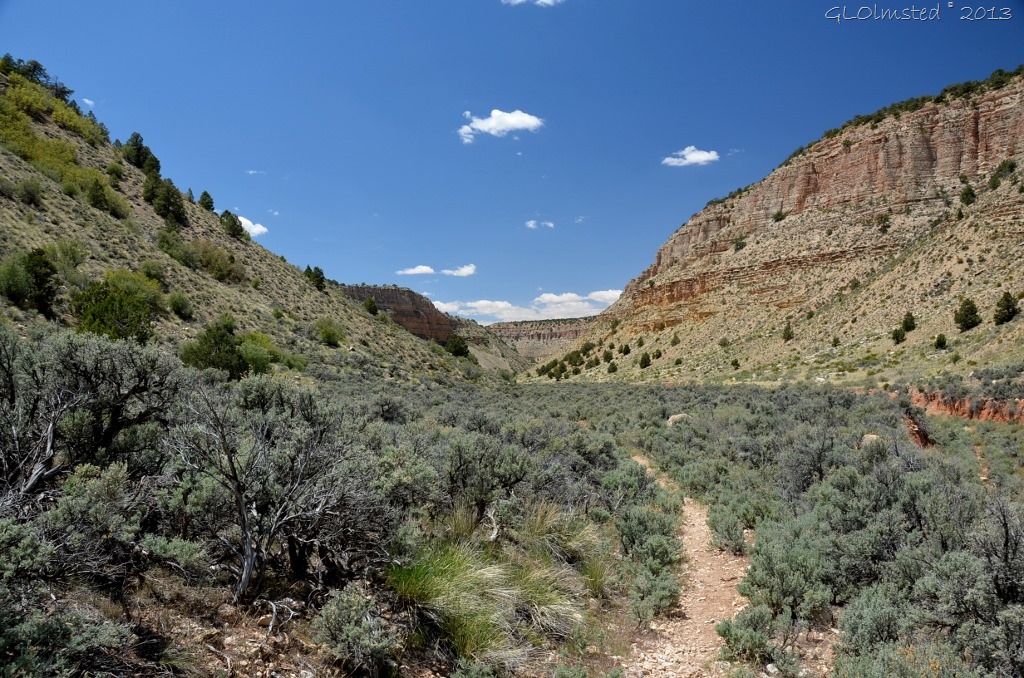
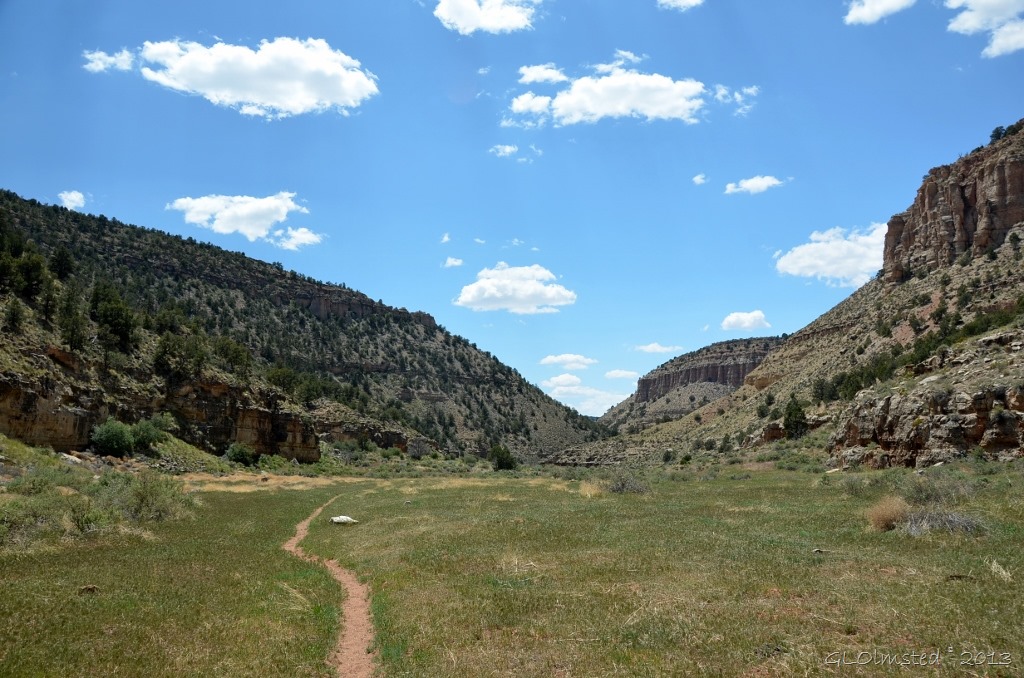
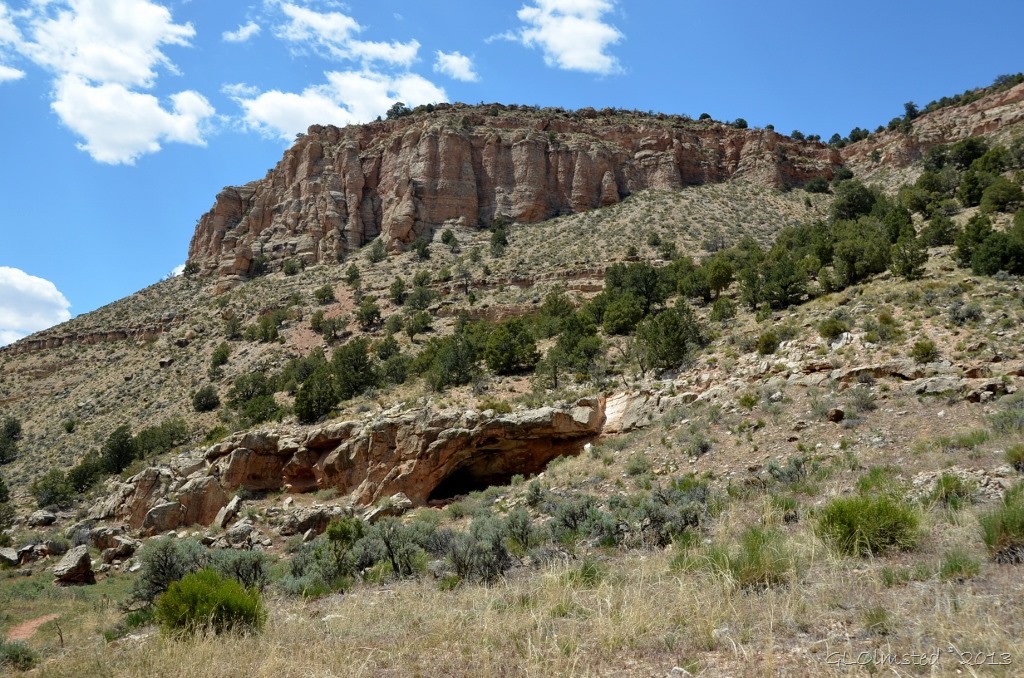
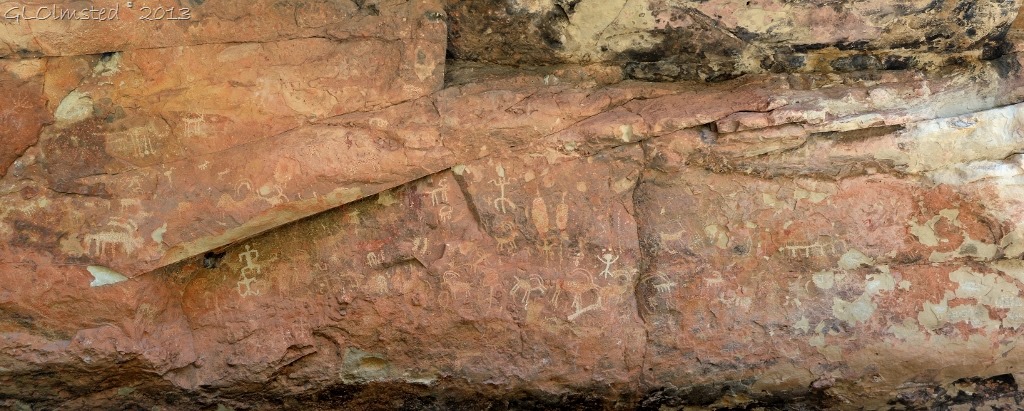
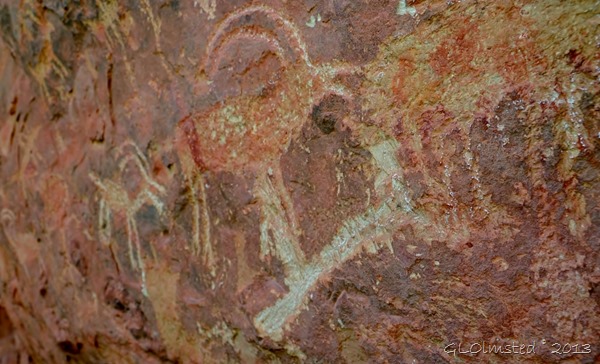
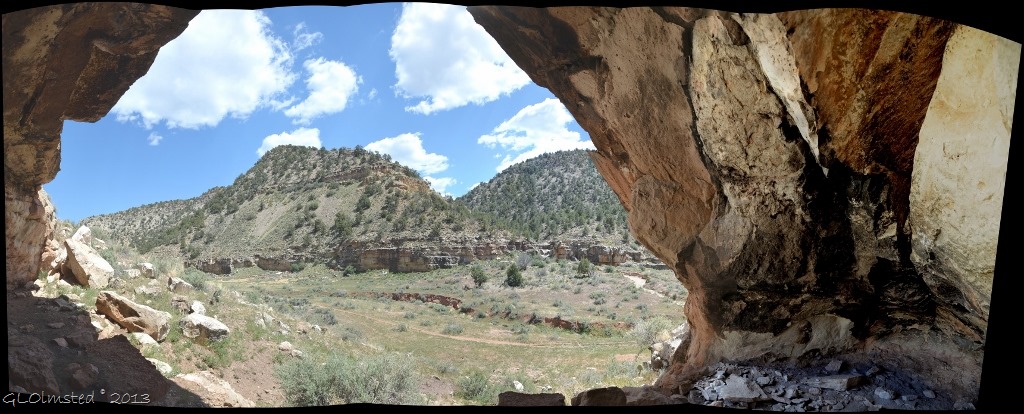
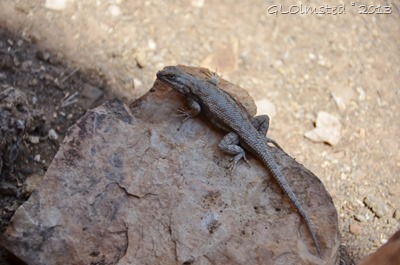
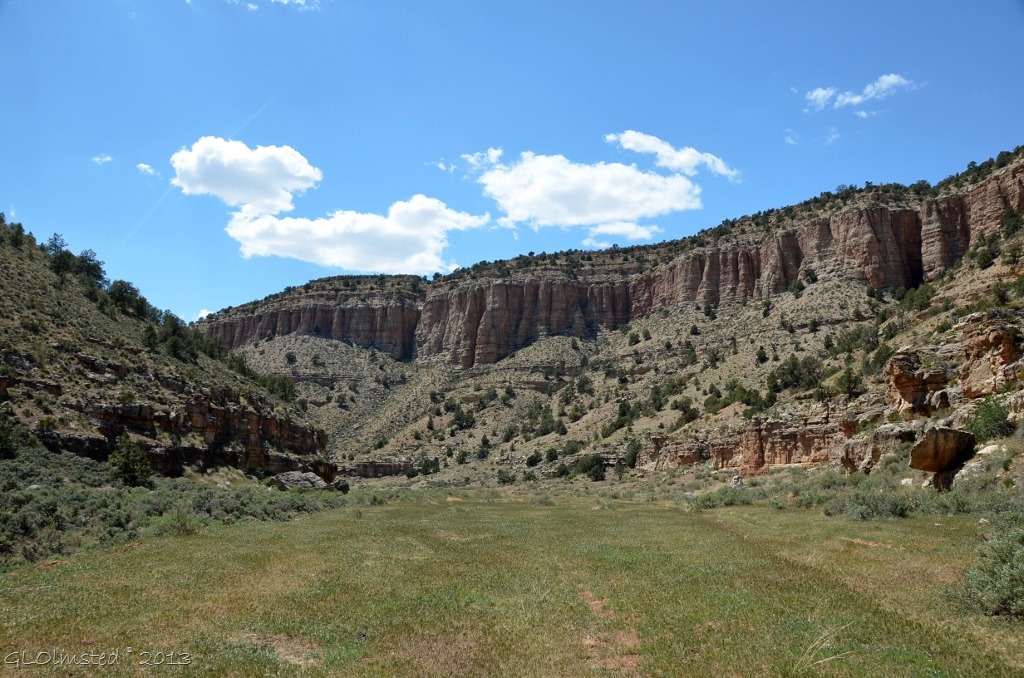
Gaelyn, this is so like our Flinders Ranges, complete with pictographs, only our’s are not as advanced as yours.
I would like to see those.
Wow. Would love to see all of this. I could sit and look at those paintings forever. I want to have a vision come across my brain that lets me see the people then. Never does but I still like them
Snake Gulch is just north of the canyon. It’s doable.
Just looking at those mountains it looks like rock painting country. I love prehistoric sites like these and would really like to visit a couple more.
Next visit to SA I’m going to see some of the rock art there.
I love visiting ancient rock art! I didn’t know about this one! Thank you for sharing these! Have you ever visited Sand Island Utah rock panel? It is huge! It is just south of Bluff UT at the BLM campground.
I haven’t visited Sand Island but will put it on the list.
I really like seeing the Petroglyphs. It’s like feeling and touching (without physically touching) other lives. Mystical to me. Thanks for the journey. Someday I’ll get there. MB
It is almost spiritual. I hope you do get down this way, someday.
Thanks for sharing this place, it’s definitely on our to visit list when we return to the area, hopefully, next year.
Worth the walk definitely not in heat of summer.
Best to hike it in the cool of spring or fall.
The rock art at Snake Gulch is impressive. Hope to visit there when we can finally get back to the North Rim. The photo from the rock shelter is fantastic…almost looks like an arch.
And there’s even more further down the trail but would be a hot place to hike.
What a lovely hike Gaelyn. I sure would have enjoyed going with you. Maybe I can come and live in that old ranch? 🙂 Love the paintings which are so different from our San ones.
That old ranch place just needs a roof to keep out the summer monsoon rains. 🙂 I really need to see some San’s art on the next visit.
Love that view from the shelter! The presence of all those who lived there so long ago must have been very strong.
I usually do feel a strong and peaceful presence at ancient dwellings.
Wow, what a wonderful hike! Thanks for sharing your photos and thoughts – they were certainly inspiring. Have you ever seen the rock art panel at Newspaper Rock in southern Utah?
I’ve only seen photos of Newspaper Rock but loved the big rock art panel at Mesa Verde.
When I see places like this, I start to think that I need a different rig or a jeep. A way to get out there. If money were no object I would buy an “earthroamer” or a Tiger Motorhome – both are 4×4. Or, I suppose I could just tow a jeep behind my rig.
Didn’t take 4×4 to get here. Your rig would do this.
Looks like my kind of hike. I’m a little hard of hearing, so I’d have to keep an eye out for snakes…at least the rattling kind.
I watched closely and thank goodness see a one.
What a great place. I imagine the valley or gulch had a lot of people way back when. Great photographs.
Always had to say how many people were around. They lived in small clan groups. But would have been a nice place to farm and live.
I love rock art; can never get over how the symbols are so similar whereever we’ve seen them. That picture looking through the keyhole arch is spectacular (among all the spectacular shots, but I can’t think of a better word at the moment.)
Thanks Sallie. I guess there was only so many ways to draw on rock of the animals seen. I look forward to seeing the rock art in South Africa.
What a great panel, Gaelyn. I’ve never been there, but this is definitely a place I want to see. Looks like it would be a fun trail to horseback ride, too.
Definitely a horse friendly trail. You’d love it.
Catching up with you. What a place (except for the name)!
Just glad I didn’t see any snakes.